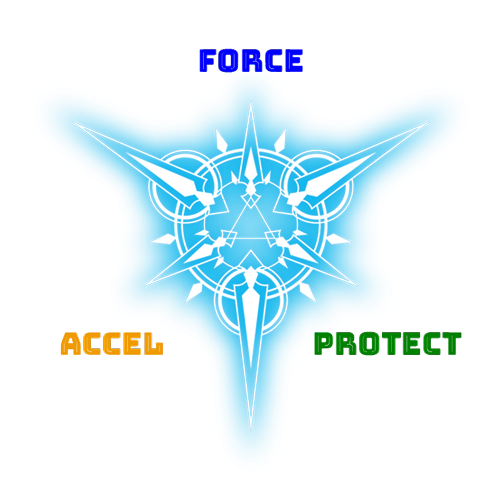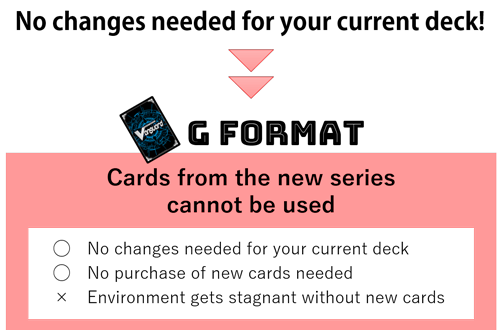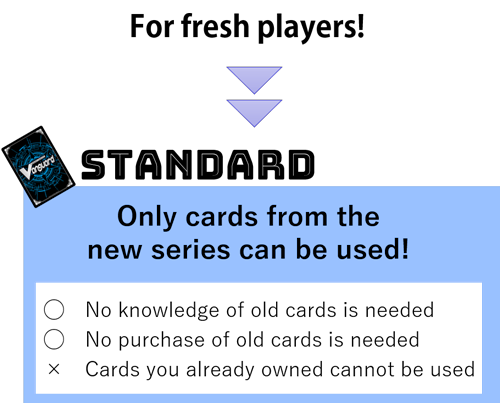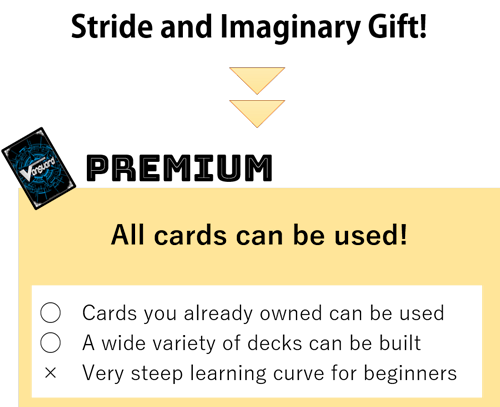Part 1: What We Know
Recently, Bushiroad has announced a reboot of sorts for their Cardfight!! Vanguard Trading Card Game.
For the most part, it attempts to refresh the game by returning to its roots, though it does not completely remove the older cards that players have come to enjoy playing and collecting.
In addition to a new series, a new set of cards, and a new set of rules; new formats have been announced. These give a new way to experience the game across multiple skill levels and experience.
Along with the announcement of the new cards and new anime series, there was also an announcement of a mobile game coming in the winter to Japan and likely early in 2019 for the rest of the world. The card game aspect of the announcement is what we will be focusing on today.
First and foremost, the V-Series brings with it a new set of cards. Two trial decks, Aichi Sendou and Toshiki Kai, will remind veterans of the game of the first two trial decks, centered around the Royal Paladin and Kagero Clans, respectively.
This time, though, Bushiroad is using their updated format for how they construct their preconstructed decks. These decks will include playsets (4 of each card) of the Perfect Guards for this new era as well as the face cards, Blaster Blade and Dragonic Overlord.
It should be noted that, although the decks come with 4 of each card, one will have different artwork. Each deck will also include 3 Gift Markers, part of a new mechanic (explanation below). As these will be the first trial decks of the new Standard Format (explanation below), they are sure to be popular early on when they are released in early June.
With the trial decks comes a booster pack release: Unite! Team Q4. The name alone should give a hint to older players as to what clans it supports. Those clans are Royal Paladin and Kagero, supporting the trial decks, as well as Oracle Think Tank and Nova Grappler. While there is not much information about this set yet, we do know some of the more technical things about it. It contains 84 cards: 4 Vanguard Rare (akin to Generation Rare), 8 Triple Rare, 12 Double Rare, 17 Rare, and 43 Common. It also comes with a variety of parallel rarities: 4 Special Vanguard Rare, 4 Special Parallel, 4 Origin Rare, and 1 Image Rare.
As the first booster of the Standard Format, this set will surely be a popular one to pick-up. Certainly much of the hype will center on new units for some of the game’s most iconic cards like Perfect Raizer, Alfred, and Amaterasu (though some of those are just hypothetical at this time). Look to June 22nd for these new cards to expand the game into a new era.
The new era also brings a new mechanic that every clan gets to enjoy: Imaginary Gift. Each clan gets a different type of gift, which is obtained only when riding a unit that has the Gift icon. Accel is for aggressive clans. Force is for clans that are balanced between offense and defense. And Protect is for defensive clans. This new mechanic adds an interesting dynamic to the game, but only time will tell how effective it is in the metagame, both new and old.
The Accel Gift adds an extra front row rearguard circle to your field and gives the unit on that circle +10,000 Power during your turn. The aggressiveness in this ability is readily apparent. You get a free boost and an extra attack besides simply re-standing a rearguard. It actually makes sense given that Stand Triggers seem to be removed from the new format at this time.
Force, being a balance of attack and defense, do not add an extra rearguard with its Gift, but instead adds power to one’s existing field. You can place the marker on any circle, be it Vanguard or Rearguard. Like Accel, it give that circle’s unit +10,000 Power during your turn, but the Force markers can be stacked on each circle to make some terrifyingly powerful rearguards.
Protect gives its fighter a boost on the defensive, turning into an extra card in hand that acts as a Perfect Guard (discarding a card to prevent an attack from hitting). While not as flashy as the previous two gifts, Protect can make defeating a fighter difficult if that player can still launch a counterattack on the next turn.
In all, while this mechanic may seem complex due to the various things to remember, it is not all that difficult to comprehend. It seems like a fun addition to the game that could end up making the game more durable.
Among other things, Triggers are the most important aspect of Vanguard, adding an element of surprise in each game. Most players know about the main four: Critical, Draw, Stand, and Heal Triggers. While most of these are carried over (with Stand being, so far, left to the past), they are not without a change. Each trigger now comes with a 10,000 Power boost to a unit, rather than the previous 5000. But, in place of Stands, the fourth trigger is now called Front.
Front Triggers are denoted by the pink colored Trigger icon seen above. Its name is a reference to the fact that it gives a fighter’s entire front row a boost of 10,000 Power. This can be both defensive and offensive, like any Trigger Power-up, but it is somewhat hard to fully gauge the power of this Trigger without knowing the full extent of the cards coming out alongside it. There seems to be a power increase across the board as 13,000 Power Grade 3 Units seem commonplace now, as well as 10,000 Power Grade 2’s with effects and power boosts.
Along with the new trigger, there are several new rule changes.
First, the mulligan at the beginning of the game will change: instead of putting cards back and then shuffling, cards are instead placed on the bottom of the deck, then the cards are drawn from the top of the deck until each player has five in hand, and then the deck is shuffled. This at change at least prevents the likelihood of a player drawing the same cards they put back in the first place.
Another rule change is for Striding and Ultimate Striding. Players must now have been at Grade 3 at the beginning of their turns before Striding. This shifts the first Stride of the game to the player that went first. While this might seem unfair, it does help make up for the fact that the player did not get to attack on the first turn, helping to balance the attacking in a way.
G-Assist also had a slight change as well: Rather than remove 2 cards in your hand and 2 cards in your G-Zone from play, you only remove the 2 cards in your hand. This helps keep your G-Zone’s plan going if the game goes long enough to use them all.
A couple last rule changes: there are no more grade restriction when guarding (so Grade 2s can be used while your Vanguard is at Grade 1) and “Once per Turn” effects will be optional at any available timing during the turn, rather than only at the first timing available.
Currently, this is the Format used in most Vanguard Tournaments, G Format. It will however be phased out as we enter the V Series. Its replacements will be the Standard and Premium Formats.
We have currently preordered the two new decks and the first V-Series product because it looks to be amazing, and we are very excited about the changes. We will have plenty in stock in June, so make sure to make us your first stop for single cards and sealed product.
The addition of different formats to the game will be controversial to some and exciting to others. Standard will be V Series only, which will likely be the most supported format going forward. However, Premium Format is likely to be popular early on among veteran players as they can use their old cards in addition or separate from the new, if they so desire.
Standard will gain steam though as new releases come. As such, Bushiroad has planned to run both formats separately during the fall World Championships with both having separate finals.
There is a lot to be excited about for the upcoming Vanguard releases, for new and old players alike. Only time will tell if the hype will be worth it.







